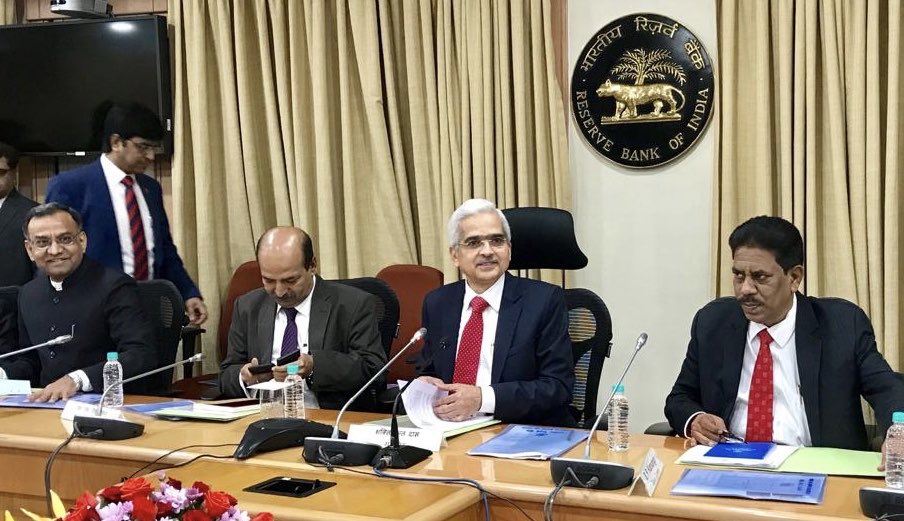Global and domestic growth inflation expectations have been benign and global central banks have been easing interest rates to support economic growth. Risks of rising trade wars and recent weakening of currencies have led to financial stability concerns.
In India, the GDP grew at just 5.8% in the last quarter, which was much slower than anticipated, and low inflation is fuelling growth worries.
The Reserve Bank of India (RBI) acknowledged the present weakening of the economy, and, reduced the policy rate (repo rate) by 35 basis points (1 basis point = 0.01%) to 5.4%. RBI also announced measures supporting liquidity to non-bank finance companies (NBFCs) and reviving credit to priority sectors such as agriculture and housing through NBFCs.
“RBI has made an exception to the norm by opting for a 35 bps rate cut,” said Amit Joshi, President and Chief Investment Officer at Bajaj Allianz General Insurance. “This action is likely to be positive for Indian government bonds given that market was expecting 25 bps.”
Joshi noted the RBI’s policy also supported the ailing NBFC sector by increasing the limit of Bank finance to a single NBFC from 15% to 20% of tier 1 capital.
“However, more is needed to address the crisis of confidence in the NBFC sector as interest rate transmission is not reaching the second-tier companies. A possible remedy could be to provide a special window to NBFC for refinancing till the time the normal market functioning is restored,” he said.
RBI’s Monetary Policy announcement on August 7 was preceded by three rate cuts aggregating to 75 basis points in this cycle beginning February. Economic growth has failed to pick up despite the rate cuts so far, and therefore there were expectations for a bigger rate cut.
However, transmission of the earlier rate cuts by banks to borrowers has been poor, and by the RBI’s own assessment, only 29 bps have been passed on to borrowers by banks in this cycle.
RBI said high-frequency indicators of services sector activity for May-June present a mixed picture. Tractor and motorcycle sales, indicators of rural demand, continued to contract. Among three indicators of urban demand, passenger vehicle sales contracted for the eighth consecutive month in June.
However, domestic air passenger traffic growth turned positive in June after contracting for three consecutive months. Commercial vehicle sales slowed down even after adjusting for base effect.
Generally, lower interest rates are better for industry and trade as financing cost goes down and investments go up. This leads to higher economic growth and more job creation. But bank deposit rates have remained high, and only recently, State Bank of India and a few banks have lowered their deposit rates. If deposit rates remain high, then the cost of funds for a bank remains high no matter where the RBI pegs its repo rate.
Bank deposit rates have remained high for two reasons – (a) competing interest rates in the government’s small savings schemes have remained high (Public Provident Fund and the National Savings Certificate pay 7.9% as of now), and (b) the liquidity crunch triggered by the IL&FS Group defaults since last September. The environment is, thus, conducive for banks to pass on the benefit of lower interest rates to borrowers.
The country's largest lender State Bank of India (SBI) was quite proactive, and in less than two hours after the RBI rate cut, announced a cut in its MCLR (marginal cost based lending rates). According to the bank's press release, it has cut rates by 15 bps across all tenors with effect from August 10, 2019.
“In an unconventional way, RBI has reduced policy rate by 35bps (normally 25/50 bps) and showed its commitment to boost growth,” said Hareshwar Karekar, Chief Investment Officer at Universal Sompo General Insurance.
“RBI has reduced growth forecast for the present financial year to 6.90% from 7% with risk tilted to the downside, and has maintained its low CPI inflation expectations. With benign Inflation and growth concerns persisting, we expect 50-100bps further rate cuts in the future,” he said.
The rate cuts (historical and anticipated) have had a much higher impact on the bonds market and benchmark yield has fallen by as much as 100 bps during the period of rate cuts starting from February 2019. Net Foreign Institutional Investors (FII) debt inflows improved to US$1.4 billion during the month of July, compared to net inflows of US$1.2 billion in June 2019. In the first seven months of 2019, aggregate net FII debt inflows were close to US$2.7 billion as against outflows of US$6.1 billion in the corresponding period a year ago.
Liquidity position has improved in the past couple of months and future liquidity issues are also not anticipated d This is reflected in the falling yields on government securities. However, any revival of economic activity will be contingent on joint efforts by the government on the fiscal front to stimulate demand, and the RBI to keep interest rates low and push for higher rate transmission by the banks.
To expect that a policy rate cut alone will reignite economic activity would be naive.
Tweet us on @connected2india or email us on info@connectedtoindia.com for your specific queries and subjects you would like us to write on.
Note: Connected to India articles on NRI personal finance are intended to help Non-Resident Indians (NRIs) understand the increasingly complex world of financial investments. It is not a solicitation, recommendation, endorsement, of any third party service provider to buy or sell any securities or other financial instruments in this or in any other jurisdiction in which such solicitation or offer would be unlawful under the securities laws of such jurisdiction.



